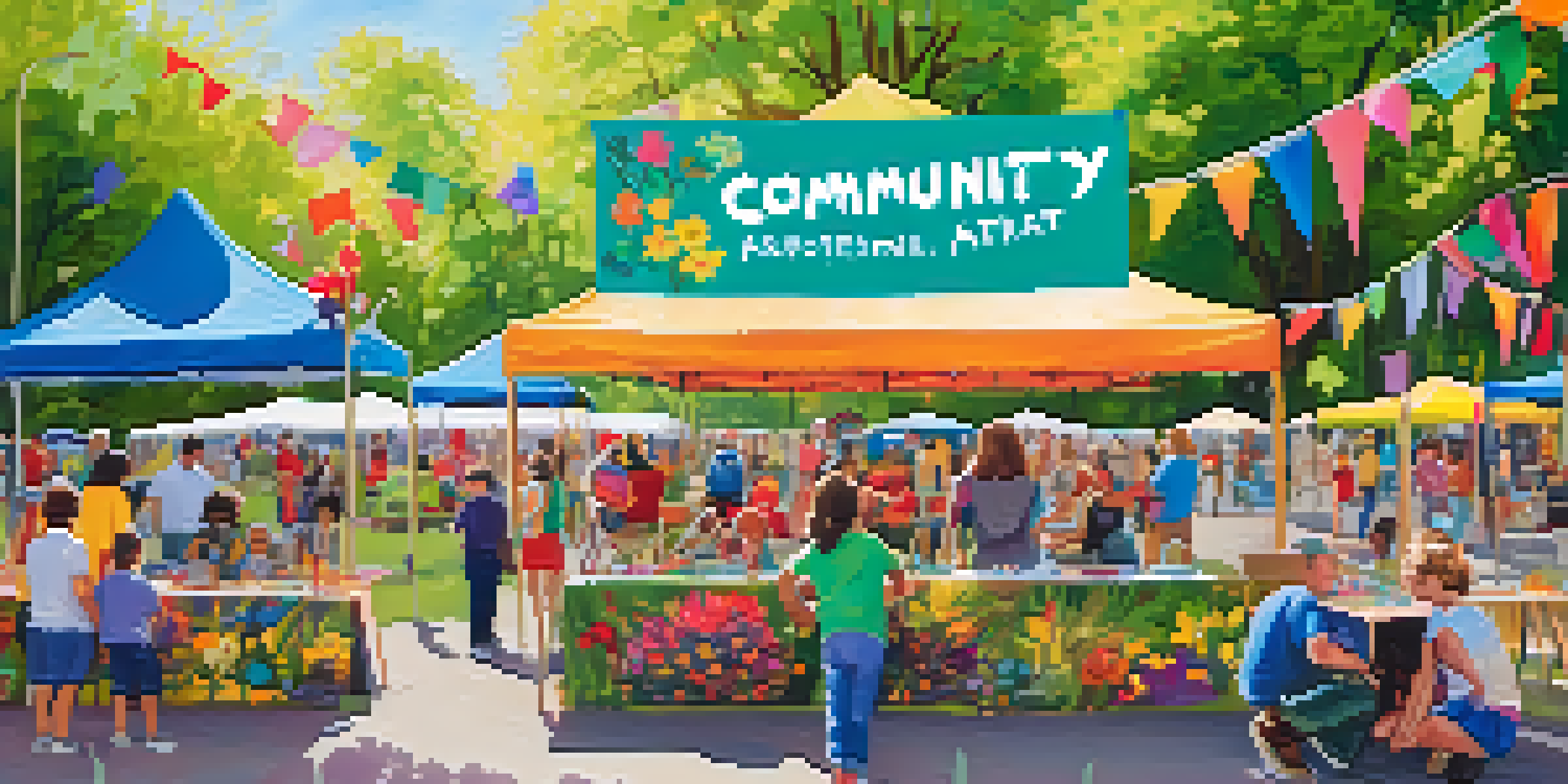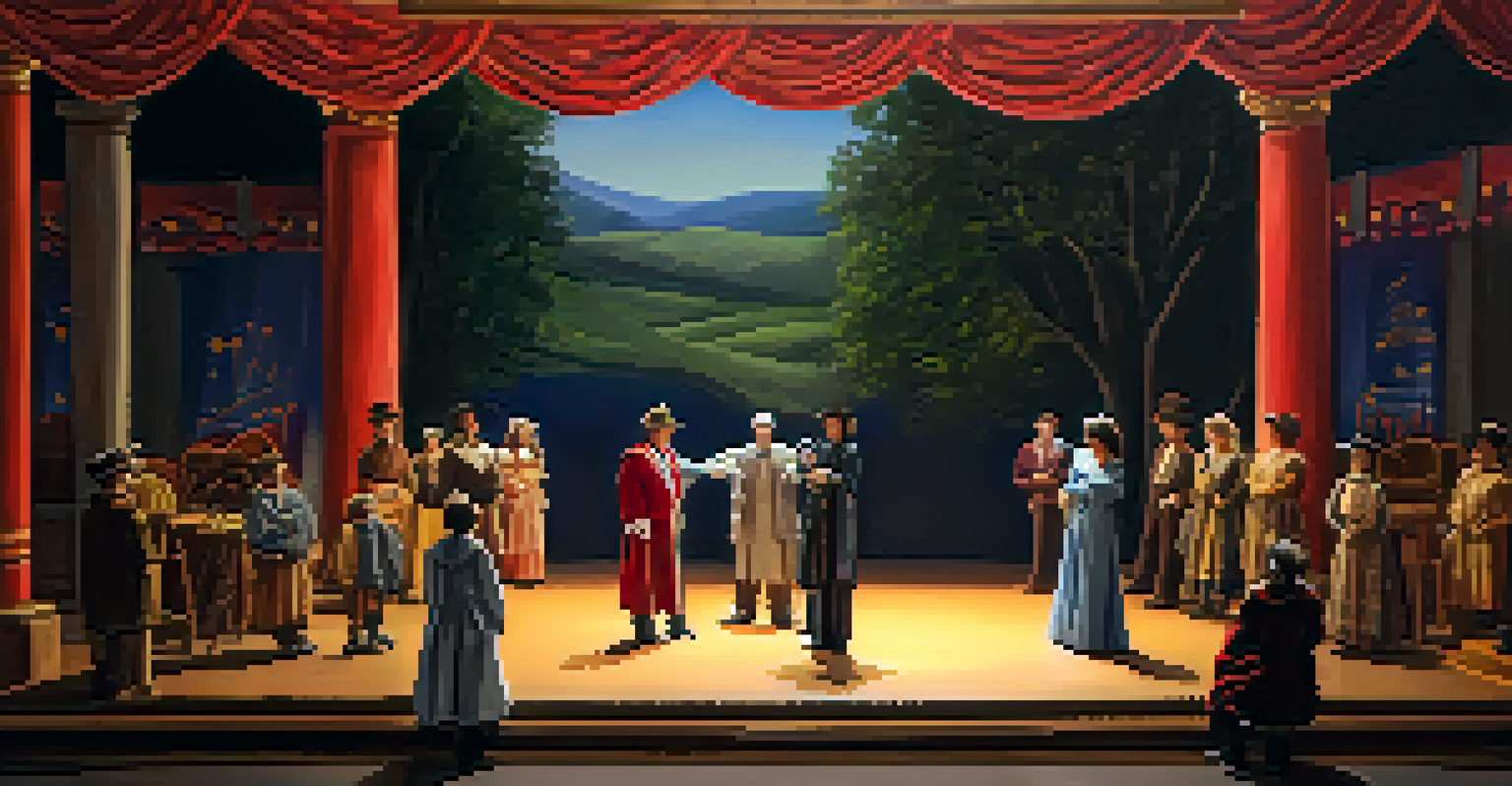The Impact of Government Funding on Local Art Initiatives

Understanding Government Funding for the Arts
Government funding for the arts refers to financial support provided by local, state, or federal entities to promote artistic initiatives. This funding can come in various forms, such as grants, subsidies, or tax incentives, aimed at fostering creativity within communities. By understanding the mechanisms of these funding sources, communities can better utilize them to enhance their local art scenes.
Art is not a luxury, but a necessity for humanity.
For many artists and organizations, this support can be crucial for survival, especially in times of economic uncertainty. Imagine a small theater group struggling to pay rent; a government grant can mean the difference between closing its doors and staging a new production. Thus, government funding plays a pivotal role in sustaining artistic endeavors that enrich our cultural landscape.
Moreover, this funding often prioritizes accessibility, ensuring that art is not only reserved for the affluent. By making art available to a wider audience, government initiatives can foster a sense of community and shared experience, highlighting the importance of art in everyday life.
The Role of Local Governments in Art Funding
Local governments are often at the forefront of supporting art initiatives through various funding programs. They understand that vibrant art scenes can boost local economies, attract tourism, and enhance community bonding. By investing in local artists and projects, municipalities can create a unique cultural identity that draws residents and visitors alike.

An example of this is the creation of public art installations funded by local tax revenues. These projects not only beautify neighborhoods but also provide platforms for local artists to showcase their work. When community members see their culture represented in public spaces, it fosters pride and encourages participation in local arts.
Government Funding Supports Arts
Financial support from government entities is crucial for sustaining artistic initiatives and enhancing local art scenes.
Additionally, local governments often collaborate with arts councils and nonprofit organizations to maximize the impact of funding. This partnership can lead to innovative initiatives, such as art festivals or workshops, that engage the community and support emerging artists.
The Impact of State Funding on Regional Arts
State funding can significantly influence regional arts initiatives by providing resources that might not be available locally. Many states allocate a portion of their budgets to arts programs, recognizing the intrinsic value of culture in enhancing quality of life. This funding can help support a wide range of projects, from performing arts to visual arts and beyond.
Creativity takes courage.
For instance, when a state establishes a grant program for arts education, it can lead to the development of new art classes in schools. This not only nurtures young talent but also helps to instill an appreciation for the arts in the next generation. Such initiatives can create a ripple effect, inspiring students to pursue careers in creative fields.
Furthermore, state funding can help stabilize organizations that may be struggling financially. By providing a safety net, states enable these organizations to continue their programs, which can be vital for community engagement and artistic innovation.
Federal Support for Arts Initiatives
At the national level, federal funding for the arts often comes from agencies like the National Endowment for the Arts (NEA). These funds are typically distributed through grants that support projects across the country, from large institutions to grassroots organizations. The NEA's commitment to promoting the arts reflects a broader understanding of its importance to society.
Federal funding can lead to large-scale art initiatives that have a nationwide impact. For example, initiatives aimed at promoting arts education can provide resources to schools in underserved areas, helping to bridge the gap in access to quality arts programming. This type of support can transform lives and communities by fostering creativity and critical thinking.
Local Governments Boost Art Scene
Local governments play a key role in funding art projects that foster community pride and enhance cultural identity.
Moreover, federal grants can encourage collaboration between different artistic disciplines, leading to innovative projects that might not occur otherwise. When artists from various backgrounds come together, they can create truly unique works that reflect the diverse fabric of American culture.
Challenges Faced by Art Initiatives in Securing Funding
Despite the importance of funding, many local art initiatives face significant challenges in securing financial support. Competition for grants can be fierce, with numerous organizations vying for limited resources. This competitive landscape can discourage smaller, emerging artists from pursuing funding opportunities, as they may feel overshadowed by larger, more established organizations.
Additionally, the bureaucratic nature of government funding can be daunting. Applications often require extensive documentation and detailed project proposals, which can be overwhelming for artists who may not have experience in grant writing. This complexity can lead to missed opportunities, as talented individuals may not apply simply due to the fear of the process.
Economic fluctuations also impact funding availability, with budget cuts affecting arts programs at all levels. When governments face financial strain, arts funding can be one of the first areas to experience cuts, leaving many initiatives scrambling for resources.
Community Engagement and Arts Funding
Community engagement is a vital component of successful art initiatives, and funding plays a crucial role in facilitating this interaction. Many funded projects aim to involve local residents in the creative process, fostering a sense of ownership and pride in their community's artistic endeavors. When residents participate, it deepens their connection to the arts and encourages a supportive environment for artists.
For example, community art projects that invite input from local residents can lead to public art installations that reflect the unique identity of the area. This collaboration not only beautifies neighborhoods but also strengthens community ties, as people come together to celebrate their shared culture and experiences.
Challenges in Securing Art Funding
Many art initiatives struggle to secure funding due to competition, bureaucratic hurdles, and economic fluctuations.
Moreover, funding for outreach programs can introduce art to underserved populations, providing access to creative expression. When art becomes a communal activity, it can break down barriers and foster dialogue among diverse groups, promoting understanding and unity.
The Future of Government Funding for the Arts
As we look to the future, the landscape of government funding for the arts is likely to evolve. Increased awareness of the arts' impact on mental health, education, and community development is prompting discussions about sustainable funding models. Policymakers are beginning to recognize that investing in the arts is not just beneficial but essential for a thriving society.
Additionally, technology is reshaping how funding is distributed and accessed. Online platforms can streamline the grant application process, making it easier for artists to connect with funding opportunities. This shift towards digital solutions can empower more individuals and organizations to pursue creative projects.

Ultimately, the future of government funding for local art initiatives will depend on advocacy and community involvement. As more people recognize the value of the arts, there is a growing demand for sustained investment, ensuring that future generations can enjoy the cultural richness that art brings to society.